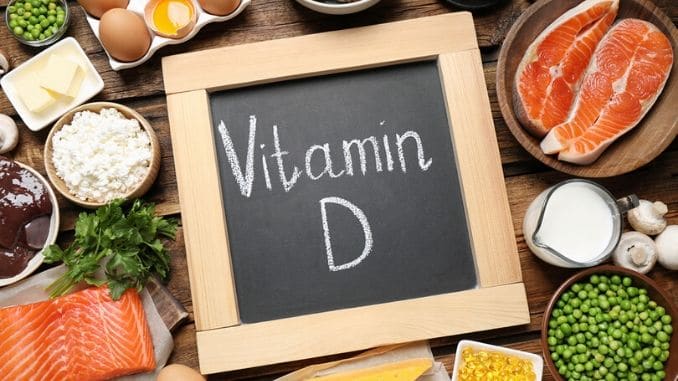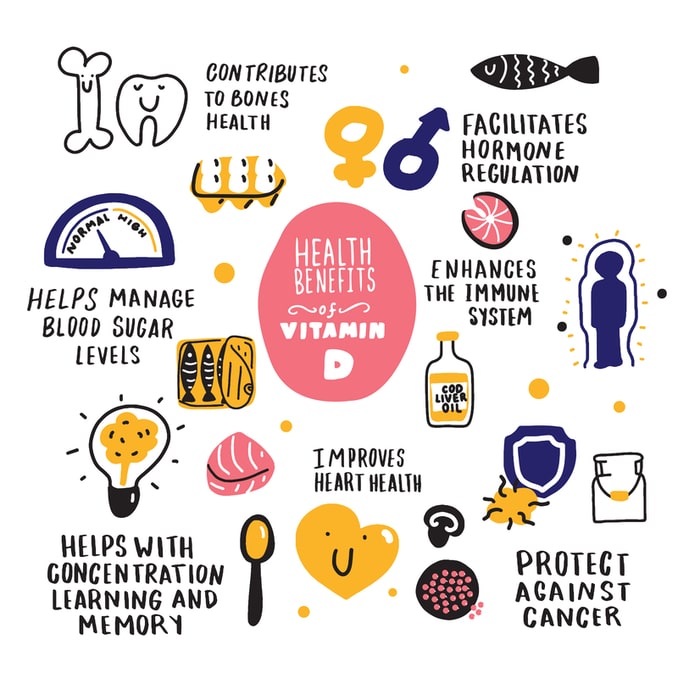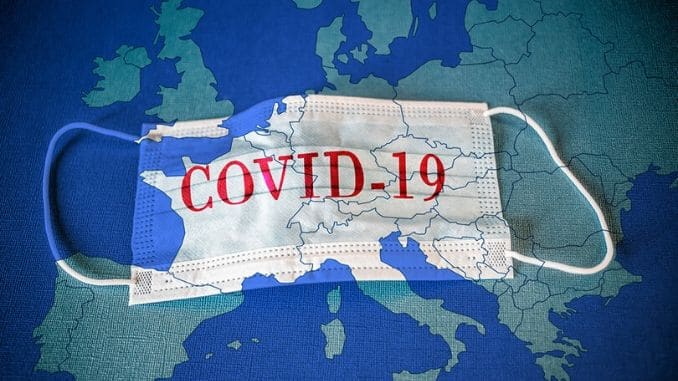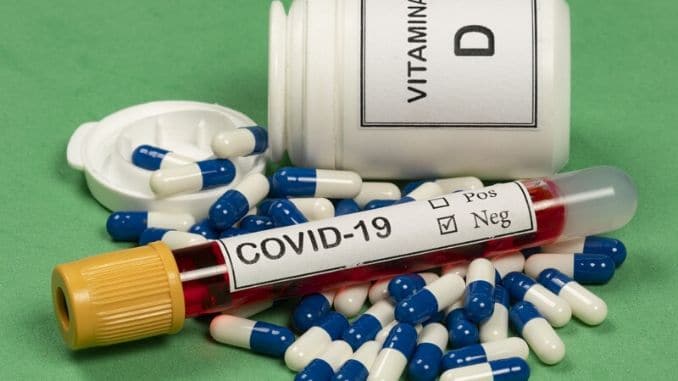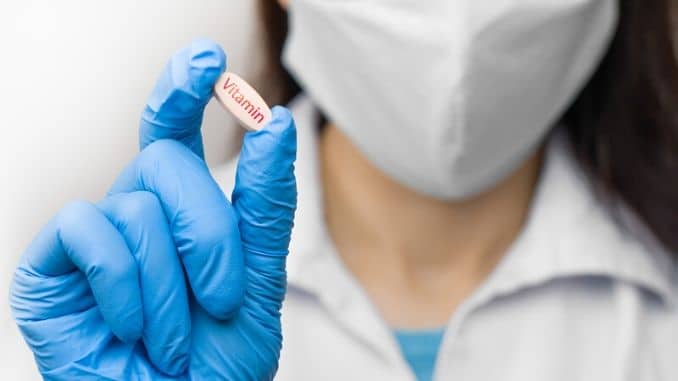
We already know that vitamin D is critical for healthy bones and teeth. But could vitamin D also play a part in COVID-19 deaths… or even infection prevention? Recent studies suggest this little sunshine nutrient could be extremely important when it comes to staying healthy during the pandemic.
What is Vitamin D?
Vitamin D is an essential fat-soluble vitamin that is required for good health. Humans get most of their vitamin D via sun exposure. When the skin is exposed to ultraviolet rays from the sun, it produces the vitamin D we need. We can also get vitamin D from supplements, with a small amount coming from foods like dairy products, fatty fish, eggs, and beef liver.
Vitamin D has multiple roles in the body. Here are just a few of the processes it’s involved in:
- Promoting healthy bones and teeth
- Supporting the function of the immune system
- Maintaining brain health
- Regulating insulin levels
- Supporting lung function
- Maintaining cardiovascular health
- Protecting the nervous system
People who don’t get enough vitamin D may suffer from:
- More frequent infections
- Bone and back pain
- Fatigue
- Impaired wound healing
- Hair loss
- Muscle pain
- Low mood
Long-term vitamin D deficiency can lead to neurological disease, autoimmune problems, cardiovascular issues, certain cancers, and infections.
The Recommended Daily Intake of vitamin D is 600 IUs (15 mcg) for adults up to 70 years, but recent research suggests that higher levels may be better for overall health. The upper limit is 4,000 IUs per day, though the National Institutes of Health (NIH) notes that toxic effects are unlikely at intakes under 10,000 IU per day.
How is Vitamin D Connected to COVID-19?
Recent research suggests that vitamin D may play a large role in coronavirus infections. Scientists from Northwestern University conducted a statistical analysis of data from hospitals and clinics across China, France, Germany, Italy, Iran, South Korea, Spain, Switzerland, the United Kingdom (UK), and the United States. They looked specifically at vitamin D levels and infection outcomes.
The team was inspired to look into vitamin D levels after noticing unexplained differences in COVID-19 mortality rates from country to country. Though there was some speculation that the differences could be attributed to healthcare quality, age distributions in population, testing rates, and different strains of the coronavirus, study coauthor Vadim Backman remained skeptical.
“None of these factors appears to play a significant role,” Backman said. “The healthcare system in northern Italy is one of the best in the world. Differences in mortality exist even if one looks across the same age group. And, while the restrictions on testing do indeed vary, the disparities in mortality still exist even when we looked at countries or populations for which similar testing rates apply.”
What did the scientists see instead? In their analysis, Backman and colleagues discovered a strong link between low vitamin D levels and the so-called “cytokine storm” that was indicative of serious virus infections. During a cytokine storm, the blood contains high levels of cytokines, which indicates a lot of inflammation. Such a storm is the result of an out-of-proportion immune reaction to the virus.
Indeed, many of the worst cases of COVID-19 were related to the body’s inflammatory reaction to the virus, rather than the virus itself.
“Cytokine storm can severely damage lungs and lead to acute respiratory distress syndrome and death in patients,” said study co-author Ali Daneshkhah. “This is what seems to kill a majority of COVID-19 patients, not the destruction of the lungs by the virus itself. It is the complications from the misdirected fire from the immune system.”
The researchers also found a correlation between vitamin D deficiency and mortality, in that those who were low on vitamin D were more likely to perish.
We know that vitamin D plays a large role in the optimal functioning of the immune system. Not only does it boost immune function when needed, but it also calms it down when necessary so it doesn’t become dangerously overactive.
Vitamin D Deficiency Linked with Other Autoimmune Conditions
We’re already familiar with many health conditions caused by an overactive immune system. Allergic reactions, for example, occur because the immune system overreacts to an allergen like peanuts or pollen. Seeing these as threatening to the body’s health, the immune system goes after them, sparking the reactions that cause watery, itchy eyes, sneezing, and even life-threatening anaphylaxis.
Rheumatoid arthritis (RA) is another example of a health condition caused by an immune system gone rogue. Immune cells mistakenly attack the body’s tissues in the joints, creating chronic inflammation that gradually destroys the health of the joints, causing stiffness and overall difficult mobility.
Interestingly, research has found a connection between many autoimmune conditions such as these and vitamin D levels. In a 2012 study, researchers reported that vitamin D deficiency was “highly prevalent” in patients with RA and that vitamin D deficiency could be linked to the severity of the disease. A 2010 review found that vitamin D deficiency was linked with other autoimmune diseases, including type 1 diabetes, inflammatory bowel disease, lupus, and RA.
So, it’s clear that vitamin D can have a big impact on the immune system and what it does. The question becomes, does it help prevent immune-based problems?
Study Shows Countries Low in Vitamin D Have More COVID-19 Cases
We already have some research on how increasing vitamin D levels may help reduce the severity of various autoimmune diseases. In a 2011 study, for instance, researchers found that supplementing a regular RA medication with vitamin D3 and calcium helped patients experience more pain relief than just taking the medication alone.
Research also shows that maintaining adequate levels of vitamin D may have a protective effect against multiple sclerosis, while a 2010 study found that vitamin D supplementation helped type 1 diabetes patients to achieve better blood sugar control. A 2018 study showed that vitamin D supplementation could help alleviate symptoms of lupus, as well.
Backman and colleagues did find some positive associations between having adequate vitamin D levels and being more likely to survive a COVID-19 diagnosis. “Our analysis shows that it might be as high as cutting the mortality rate in half,” he said. “It will not prevent a patient from contracting the virus, but it may reduce complications and prevent death in those who are infected.”
The results of a recent 2020 study, though, suggest that having adequate vitamin D levels may, indeed, play a role in prevention, too. Researchers looked at mean levels of vitamin D for 20 European countries and mortality caused by COVID-19. They found that the lower the mean levels of vitamin D in a country, the higher the number of COVID-19 cases in that country.
The researchers went on to note that vitamin D deficiency “is a major public health problem worldwide in all age groups.”
U.S. Population Largely Deficient in Vitamin D, Studies Find
Scientists have been sounding the alarm about vitamin D deficiency for several years now. Research published in 2009 showed that three-quarters of U.S. teens were deficient in the vitamin, with overall deficiency increasing alarmingly over the years.
Between 1988 and 1994, less than half (about 45 percent) of the over 18,000 Americans examined had 30 nanograms per milliliter or more of vitamin D (the level now considered sufficient for overall health). A decade later, between 2001 and 2004, less than a quarter (only 23 percent) of those surveyed had at least that amount.
African Americans were particularly at risk—by 2004, only 3 percent of them had adequate levels of vitamin D in their systems.
“We were anticipating that there would be some decline in overall vitamin D levels,” said study co-author Adit Ginde, “but the magnitude of the decline in a relatively short period of time was surprising.”
Another study showed similar results. Scientists examined data from over 4,000 participants between 2005 and 2006 and found that 41.6 percent of them were deficient in vitamin D. The highest rates were seen in African Americans, with 82.1 percent showing deficiency, while 69.2 percent of Hispanics were also deficient.
“In summary,” the researchers wrote, “vitamin D deficiency was common in the U.S. population….” They added that given the fact that vitamin D deficiency is linked with some of the important risk factors of leading causes of death in the U.S., “it is important that health professionals are aware of this connection and offer dietary and other intervention strategies to correct vitamin D deficiency….”
Why are we getting less vitamin D today than we were before? There are several theories. Some of the possible reasons include:
- People are using sunscreen more often. When you have sunscreen on, your skin can’t produce vitamin D when exposed to UV rays. Using sunscreen even at a low SPF 15 can cut the skin’s vitamin D production by 99 percent.
- People are wearing hats and long-sleeves more often to protect from the sun.
- There are few sources of vitamin D in our diets. Even if we eat a lot of vitamin-D-rich foods, we won’t get enough to maintain optimal levels.
- People are spending more time indoors with their computers, tablets, and phones, rather than getting outside.
How to Get More Vitamin D
If you fear you may be low on vitamin D and you want to protect your health, we have some tips for you below. The following individuals are most at risk for deficiency. It may be wise to ask your doctor for a blood test to determine your vitamin D levels.
We do caution against taking “megadoses” of vitamin D to protect against COVID-19. There is no evidence that this will help, and excessive intake can lead to health problems. The main thing is not to be deficient in the vitamin.
You may be particularly at risk if:
- You have dark skin (the pigment melanin reduces the skin’s ability to make vitamin D in response to sun exposure)
- You live in the northern latitudes where there is less sunlight overall
- You spend limited time outside
- You follow a strict vegan diet, avoiding dairy, beef, eggs, and/or fish
- You are very overweight or obese
- Your kidneys aren’t functioning optimally
- You are over the age of 70 (aging decreases the capacity of human skin to produce vitamin D, as well as the body’s ability to absorb the nutrient)
To get more vitamin D:
Get out in the sun.
The sun is the best source. In addition to providing the most potent supply of vitamin D, it also creates a type of vitamin D that is likely to circulate in your body longer than vitamin D from food or supplements.
The prevailing advice is to stay out in the sun (without sunscreen) for half as long as it takes your skin type to burn, then cover-up, apply sunscreen, or return to the shade. This should give you the vitamin D you need without increasing your risk of skin cancer.
Eat more vitamin-D-rich foods.
You can’t get all the vitamin D you need from food, but you can get some. The average amount of vitamin D from food sources equals about 280 IU per day. Good sources include salmon, tuna, sardines, shrimp, anchovies, trout, mushrooms, fortified milk, yogurt, cheese, fortified orange juice, fortified breakfast cereals, eggs, and beef liver.
Try a UV lamp.
These are often used to help people suffering from seasonal affective disorder (SAD), which is thought to be caused by a lack of sun exposure, and may help boost your vitamin D levels as well.
UV lamps mimic the action of the sun and can be particularly helpful for those individuals living in northern latitudes and areas of the country where the sun is out less often. Keep in mind that these emit UV rays, so they can also put you at risk of skin cancer. Limit your exposure to 15 minutes at a time.
Take a vitamin D3 supplement.
Vitamin D supplements can help fill in the gaps your lifestyle and diet leaves behind to help you maintain adequate vitamin D levels. For most people, 1,000 to 4,000 IUs a day is a safe daily dose. The recommended form of vitamin D is vitamin D3 or cholecalciferol. It is the natural form of the vitamin that your body makes from sunlight.
Take cod liver oil.
If you’d rather not take a pill, you can get about 1,300 IUs of vitamin D from a tablespoon of cod liver oil.
For your guide to strengthening your immunity, check out the 14-Day Immune Health Quick Start Program, here!

